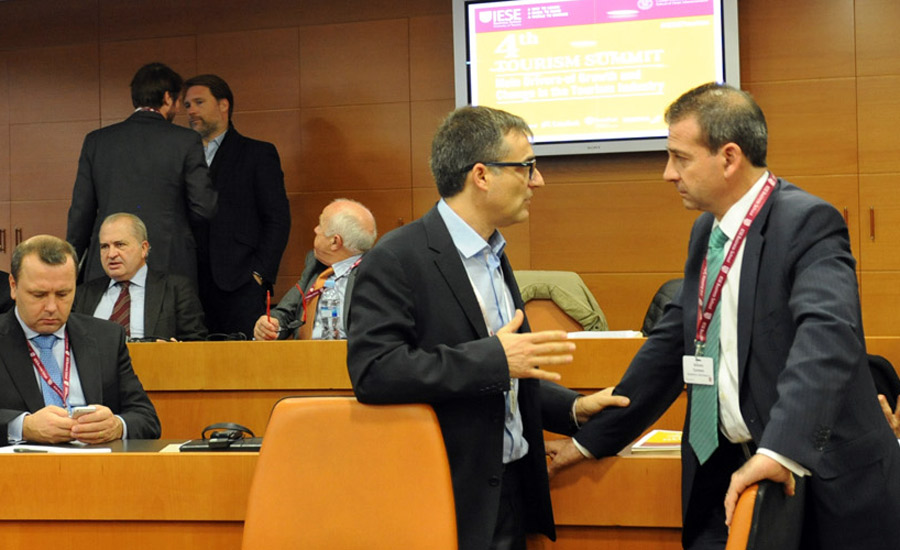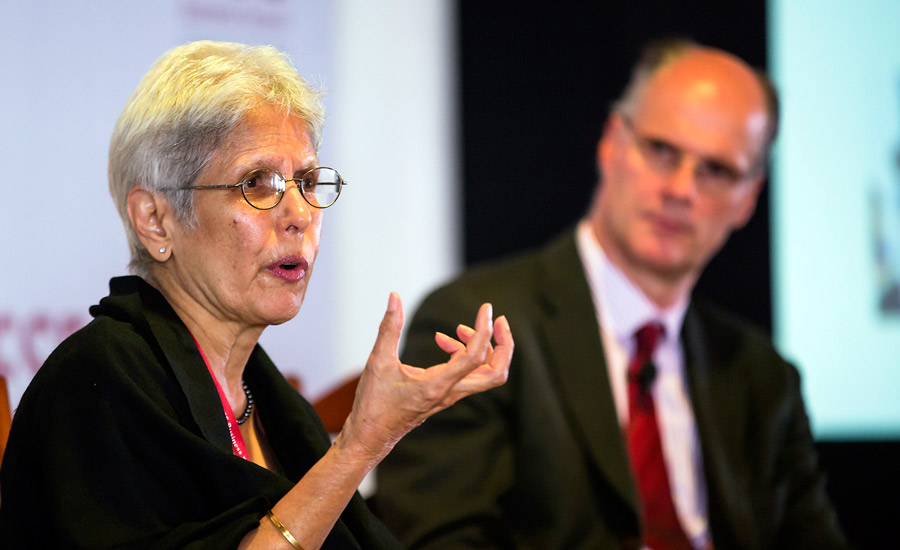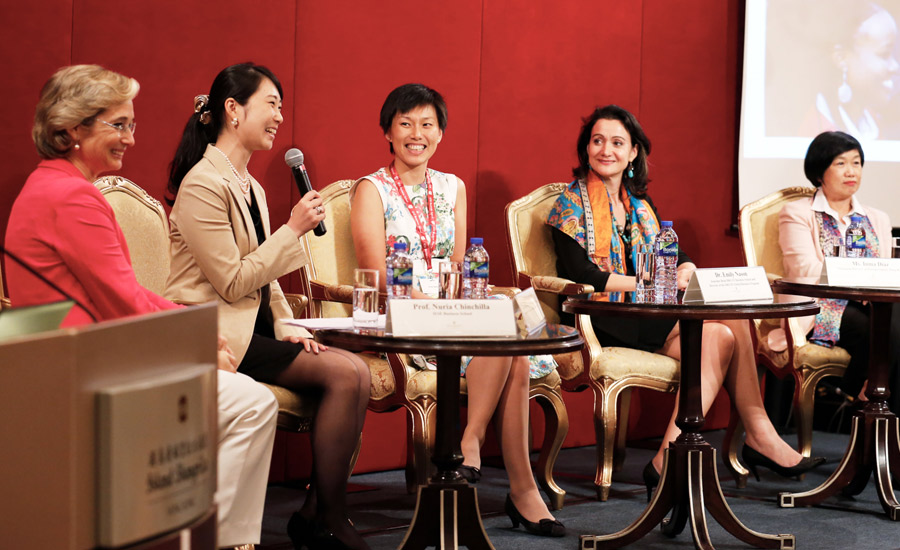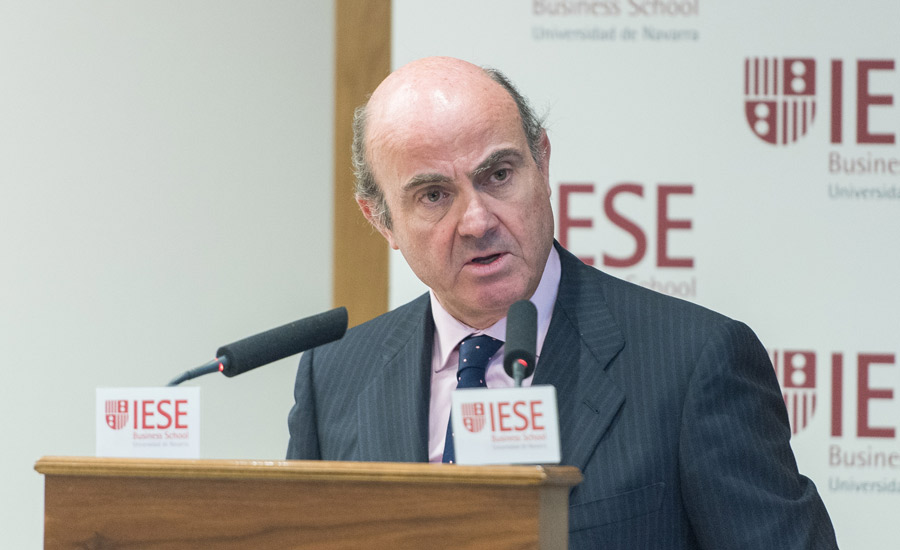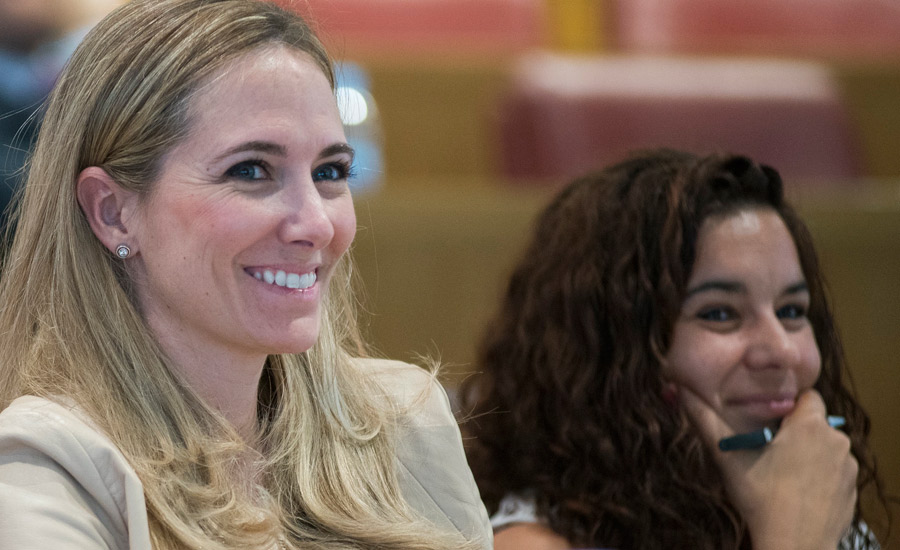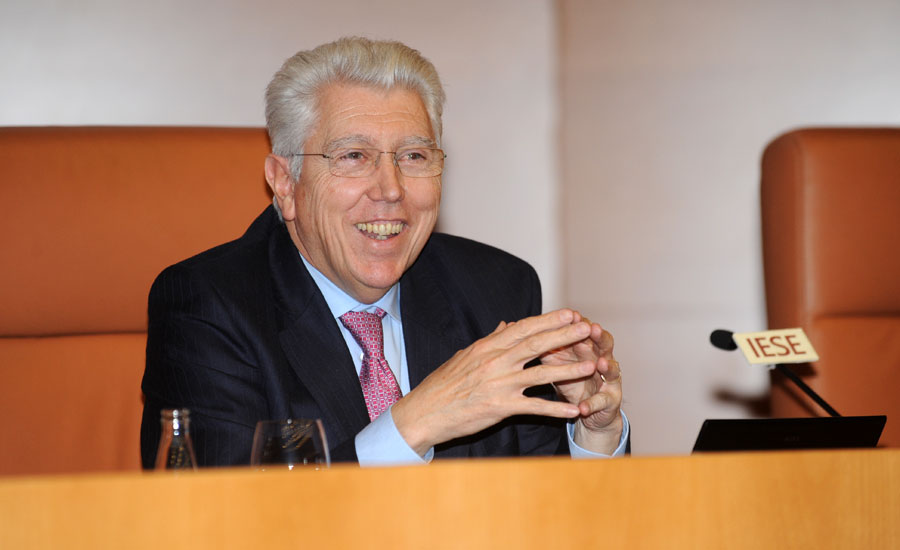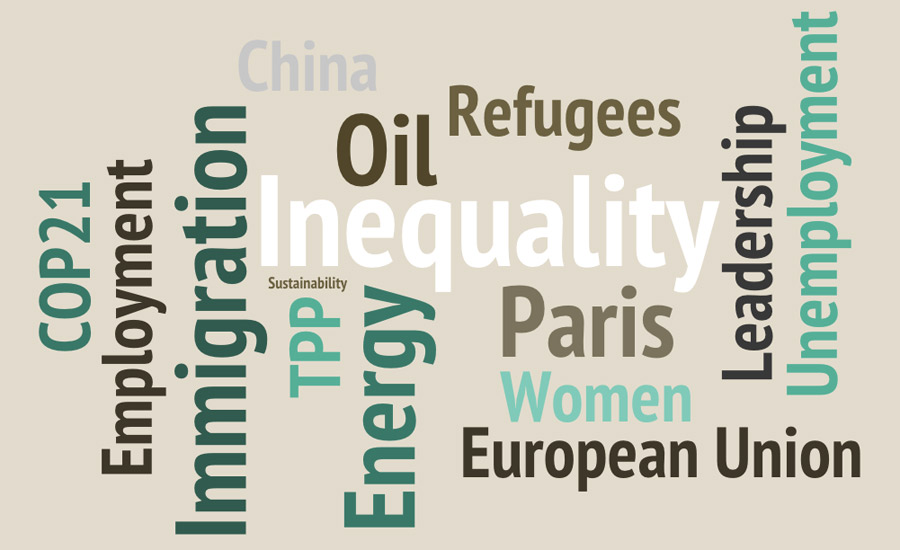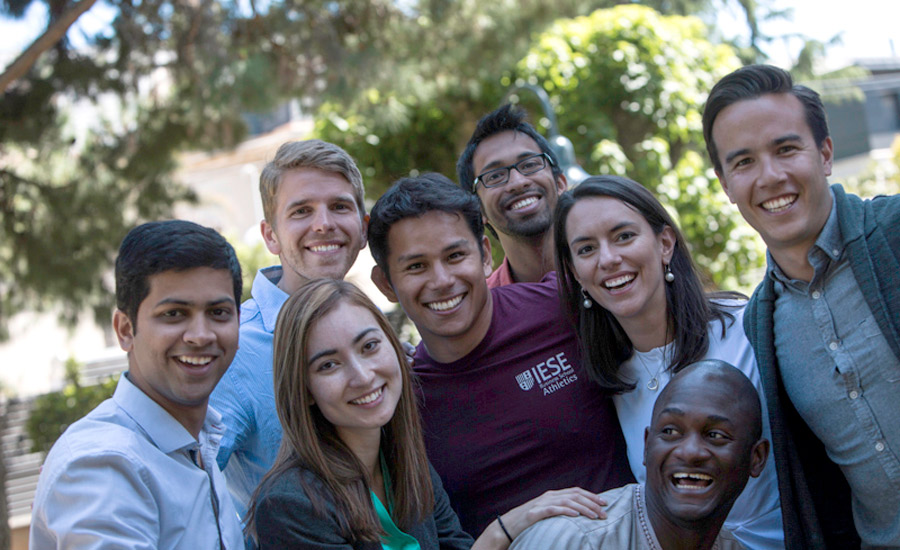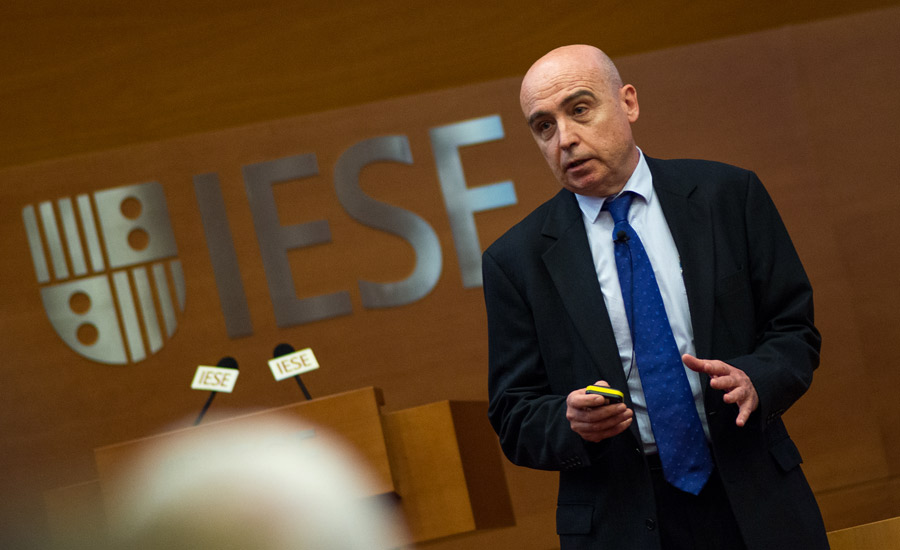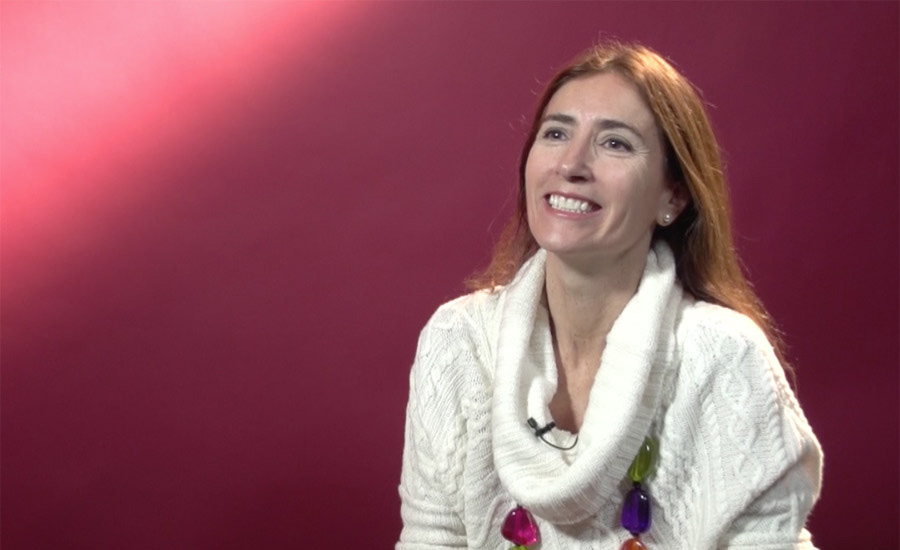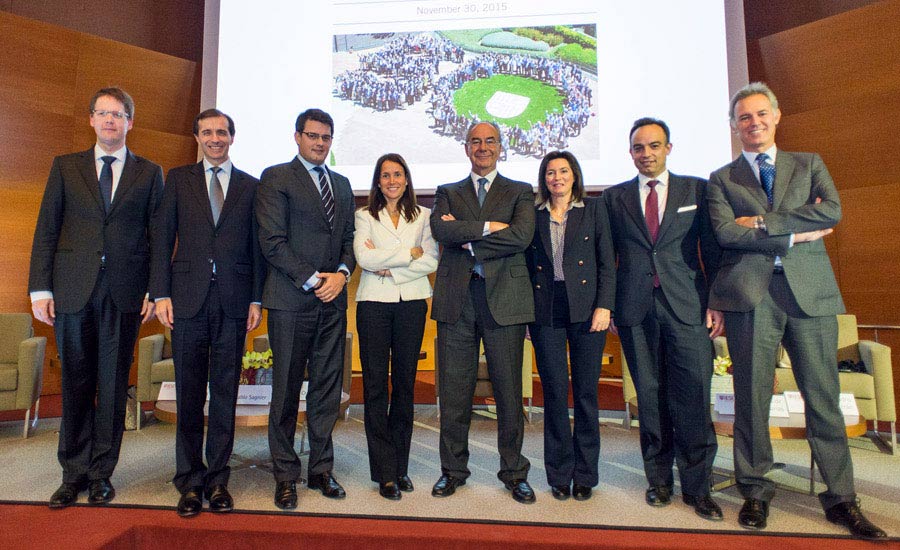
Becoming a leader isn’t just about accumulating knowledge; it’s about developing as a human being.
This was one of many key insights shared by a panel of distinguished IESE alumni celebrating the MBA 50th anniversary on campus in Barcelona this week.
Prominent senior executives from the worlds of banking, finance, consultancy and recruitment, the alumni shared personal insights into how to make the most of the MBA, and what it takes to become a successful business leader.
Introducing them was Dean Jordi Canals who said: “We are convinced that through good management we can have a transformational impact on people, companies and society.”
This positive impact was illustrated by Cristina de Parias (MBA ’91), head of BBVA Spain and Portugal and president of Catalunya Banc.
Her return to IESE after 24 years, she said, had reminded her of a valuable lesson. “You have to be open to guidance from every source during your two years as an MBA. It’s not just about being a straight-A student; open yourself up to be a straight-A person.”
Personal integrity was a concept also taken up by Cristina Badenes (MBA ’98), partner at private equity fund management firm Meridia Capital.
“It’s simple but essential,” she said. “When I am recruiting I’m aware that there are specific skills or knowledge that can be taught; but you can’t teach people to be good listeners, or good people.”
Antonio González-Adalid (MBA ’75), CEO of investment company Cartera Industrial Rea agreed, and said that although he now only recruited at board level, the selection criteria remained the same: to identify “good people who will be behind you when you need support.”
And while an emphasis on functional skills remains valuable, it’s the emotional intelligence and insights gained from working alongside peers and faculty on the MBA that were deemed “more important” by Kristoff Puelinckx (MBA ‘96), co-founder and board member of TMD industry advisory firm Delta Partners.
“You’re not just coming to a center of business but a center of human values,” he said.
Smart but not Humble Enough?
While most MBAs are “smart,” not everyone is “humble,” said de Parias.
“In fast international markets you need to change strategies quickly. You may need to lead or follow, depending on the moment.You need values, passion and flexibility – the ability to compromise and work in teams.”
IESE had helped her prepare for the reality of managing international teams, she said.
“Teamwork was the main driver of my growth. What you learn is humility, flexibility and respect for the full scope of diversity.”
Pablo Sagnier completed his MBA in 1990. Now a partner at executive search firm Egon Zehnder International, he said that teamwork had also driven his career and helped him to grow as a person: “I learned to be humble, to listen, to collaborate with others and to know myself better.”
Alejandro Beltrán (MBA ‘98), managing partner at Mckinsey & Company Iberia agreed. “IESE puts emphasis on people. It’s a journey and it starts here,” he said.
“The first step is building foundations: problem solving skills, trustworthiness, teamwork. Develop them here at IESE and apply them afterwards.”
The Growth Mindset
Having the potential and desire to keep learning was described by Beltrán as key to success in business.
“I don’t care if you’re the smartest person on Earth,” he said, “You need to be open, to have a ‘growth mindset.’ We all have unconscious biases and see the world through our own lenses.”
This point was expanded upon by Pablo Sagnier, who said that leaders have moved on from the ‘kill or be killed’ survival instinct, through the era of expertise in sectors and functions, and now on into an era of strategic vision.
The next era, he said, would be one that prioritized growth potential: the ability to adapt to change in a dynamic, flexible world. Developing this would be rewarding, he said, but not easy. “Know yourself,” he advised, “Be curious, and always ask for feedback.”
Ask The Right Questions
Formulating the ‘right questions’ is fundamental to success in business, said Alejandro Beltrán.
“You see people working and going in a direction but they haven’t thought about the ‘why’.”
Cristina Badenes was keen to point to the value of the case method in developing curiosity and critical thinking capabilities.
“Many people are taught to learn but IESE taught me to think critically. We sometimes put a lot of time and energy into solving the wrong things but after hundreds of business cases, you learn to always ask, ‘What is the real problem?’”
IESE MBAs, said Kristoff Puelinckx, have already opted to play in the “Champions League” by choosing a top-ranked business school.
Now, he said, it’s a question of setting longer-term objectives.
“Go for your objectives and keep going for them without calculating or measuring their efforts.”
“Making things happen is good. But making a difference is better. Ask yourself every week and every year: If I weren’t here, would it make a difference?”

